Have you ever seen doctors or factory workers wearing thin, plastic coats? Those might be PE laboratory gowns. PE stands for polyethylene. These gowns are like light raincoats for work. They are often PE disposable gowns, meaning you use them once and throw them away. This helps keep things clean and safe.
These polyethylene protective clothing items are very important. They act as barrier protection against spills, germs, and dirt. Think of them as shields! This article will show you the many lab gown applications across different jobs and places, exploring the uses of PE laboratory gowns in different industries. We’ll see how this simple single-use medical apparel keeps people and products safe.
Who Uses PE Lab Gowns? Many Industries!
PE gowns are not just for doctors. Many different workplaces need them for safety and contamination control. Let’s look at some key places:
A. Healthcare & Hospitals
Hospitals need to be super clean to stop germs from spreading.
- Why they use them: Doctors and nurses wear medical-grade PE gowns for infection control. This is very important in places like ICUs (intensive care units) and operating rooms. They also wear them when caring for sick people in patient isolation to stop sickness, like COVID-19, from spreading. These gowns protect workers from bloodborne pathogens and other harmful liquids. Many are fluid resistant PE gowns.
- Proof it works: Studies show that how comfortable a gown is matters. If gowns are easy to wear, more hospital workers will use them correctly. Almost half (48%) of safety experts said gown design helps workers follow the rules. This shows why good medical apparel design is key. You can find different types, like fluid resistant PE gowns suitable for these settings.
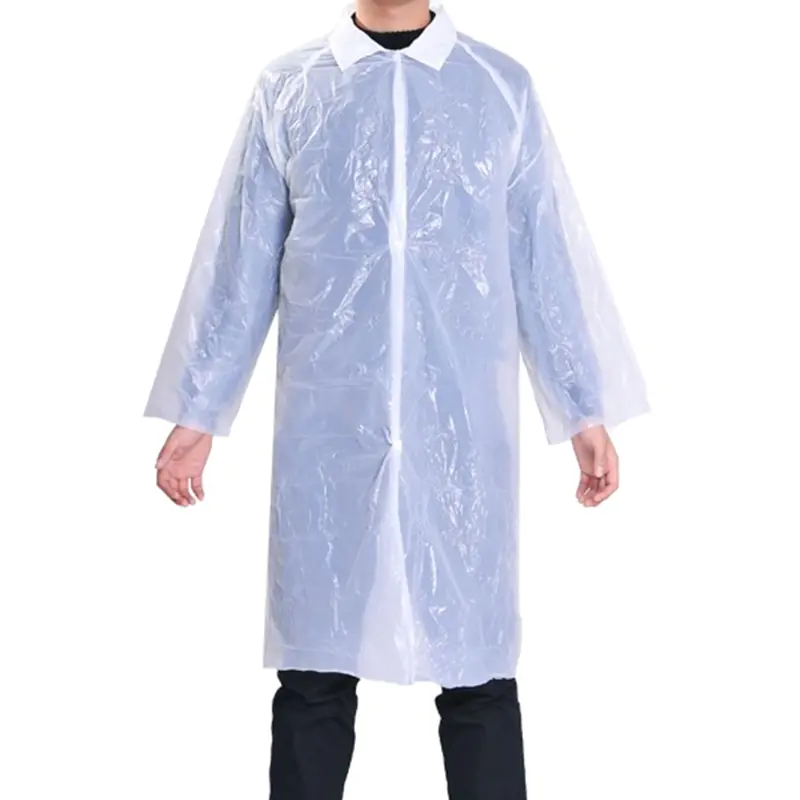
B. Pharmaceuticals & Biotechnology
Making medicines and vaccines needs very clean spaces called cleanrooms.
- Why they use them: Workers wear pharmaceutical PPE standards gowns to stop cross-contamination. This means preventing tiny bits of one medicine from getting into another. This is vital during sterile compounding (mixing special medicines) and vaccine production. They are basic PPE for cleanrooms.
- Proof it works: One company making COVID-19 vaccines found that using special multilayer PE gowns cut down tiny dirt particles by 90% in their super-clean ISO 5 cleanrooms. This helps make sure medicines are safe.
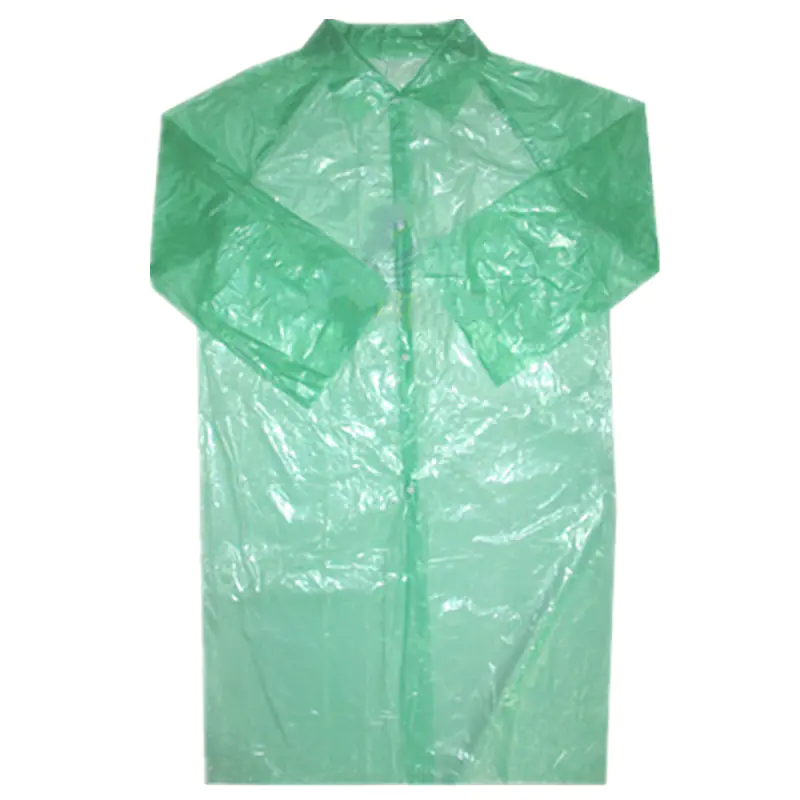
C. Food Processing & Packaging
Keeping food safe to eat is the top job here.
- Why they use them: Workers wear hygienic food processing attire, like PE gowns, to follow safety rules (FDA 21 CFR, HACCP). This stops microbial contamination (germs) and prevents allergen transfer. For example, it stops peanut dust from getting into peanut-free snacks. Check out options like PE Gown Rolls for Food Factories designed for this use.
- Proof it works: When food places started using disposable plastic gowns, there were 35% fewer food recalls because of allergens mixing by mistake. This shows allergen control works better with the right lab wear.
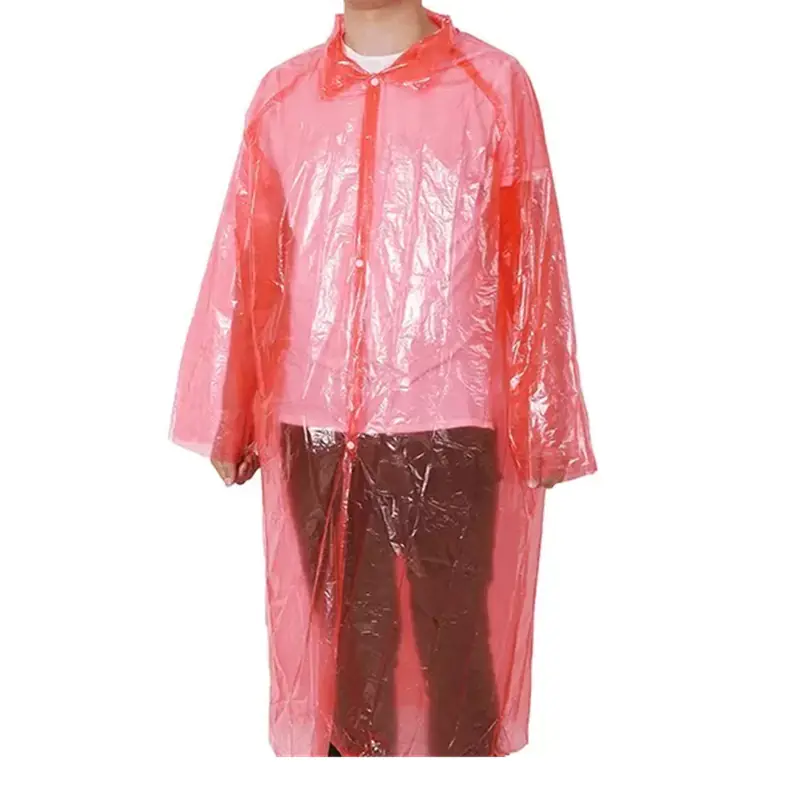
D. Electronics Manufacturing
Making tiny computer chips (semiconductor fabrication) needs super clean rooms free of dust and static electricity.
- Why they use them: Workers use ESD-safe laboratory wear. ESD means electrostatic discharge, which is like a tiny zap of static electricity that can break sensitive electronics. Special PE gowns prevent this ESD protection failure in static-sensitive environments.
- Proof it works: A big company, Samsung, said they had 60% fewer broken parts caused by static after they switched to ESD-safe PE gowns. This shows how important the right industrial safety gowns are here.
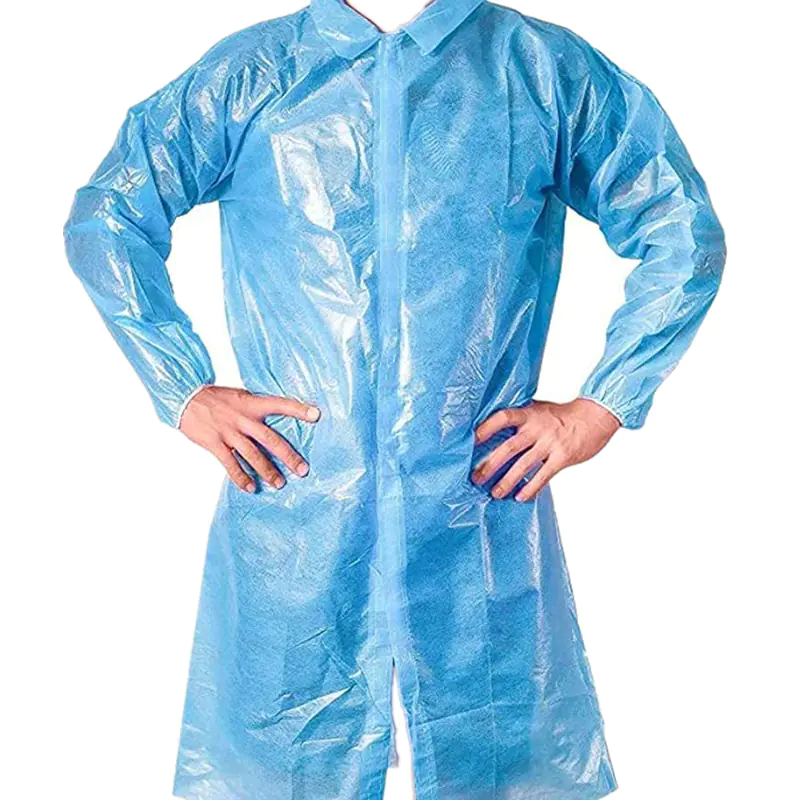
E. Research & Academic Laboratories
Scientists in labs often work with chemicals or samples that could be risky.
- Why they use them: PE gowns are basic PPE (personal protective equipment) in chemistry labs, biology labs, and even forensic labs. They give chemical splash protection against mild spills of hazardous materials.
- Proof it works: Safety data showed 22% fewer injuries in university labs that used single-use PE gowns compared to those that didn’t. Simple contamination control gowns make a difference.
F. Industrial Cleanrooms
Besides electronics, other industries need clean spaces too.
- Why they use them: Places making aerospace parts, parts for cars (like in automotive paint shops), or working with super tiny things (nanotechnology) use PE gowns. They help meet cleanroom classifications based on ISO 14644 standards by reducing particle shedding. These ISO-certified lab gowns keep the air and products clean.
- Proof it works: Boeing, a plane maker, met a high clean standard (ISO Class 7) using PE gowns that released almost no particles (<0.5%).
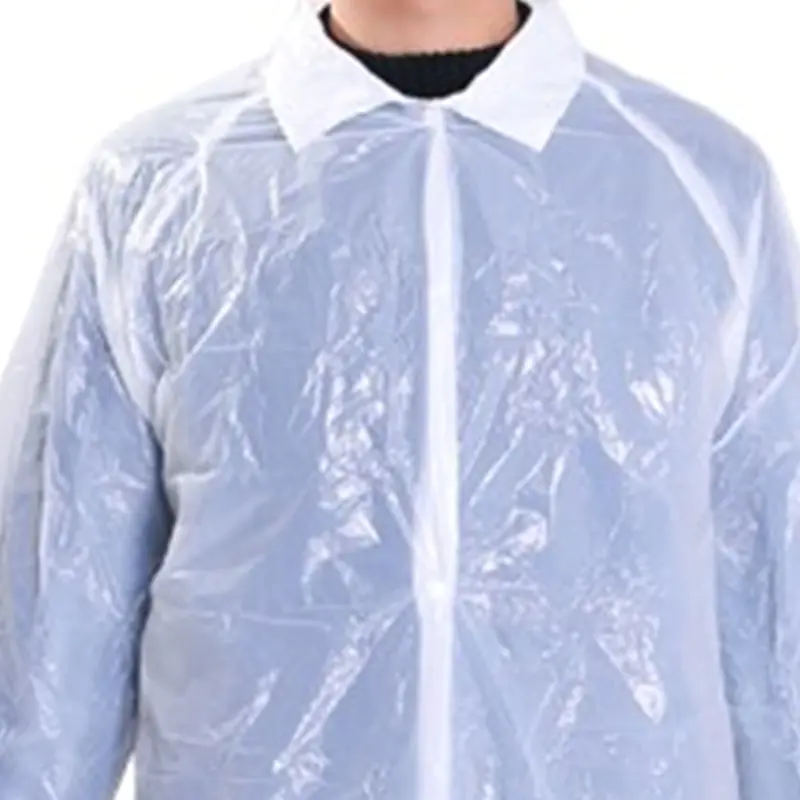
G. Veterinary & Animal Facilities
Vets and animal care workers also need protection.
- Why they use them: PE gowns provide a barrier protection during animal surgeries. They also help protect staff from zoonotic diseases – sicknesses that can pass from animals to people, like rabies or avian influenza.
- Proof it works: A study found that vet clinics using PE gowns had 50% lower spread of animal diseases to humans.
H. Cosmetics & Personal Care Production
Making lotions, creams, and makeup needs clean conditions.
- Why they use them: Workers wear PE gowns to keep sterile environments during cosmetics manufacturing and personal care production. This ensures skincare product manufacturing results in safe, clean products.
- Proof it works: A large company, L’Oréal, reported a nearly perfect (99.9%) success rate in keeping their production area sterile after using PE gowns. A simple Plastic lab gown can be very effective.
Why Choose PE Gowns? The Benefits
Different industries choose PE gowns for good reasons:
- Cost-effectiveness: They are cheap because they are single-use. You don’t need to wash them like reusable alternatives. This saves time and money.
- Fluid resistance: PE material is like plastic, so it stops liquids. This polyethylene protective clothing is great against water, oils, and even light chemical splash protection. It’s often better than basic non-woven polypropylene gowns for wet tasks.
- Lightweight design: PE gowns are very light and don’t get in the way. This makes it easy for workers to move, especially in busy places like food lines.
- Single-use convenience: Using a gown once and throwing it away is the best way to stop cross-contamination. No need to worry if a washed gown is truly clean. This includes items like disposable sleeve covers too.
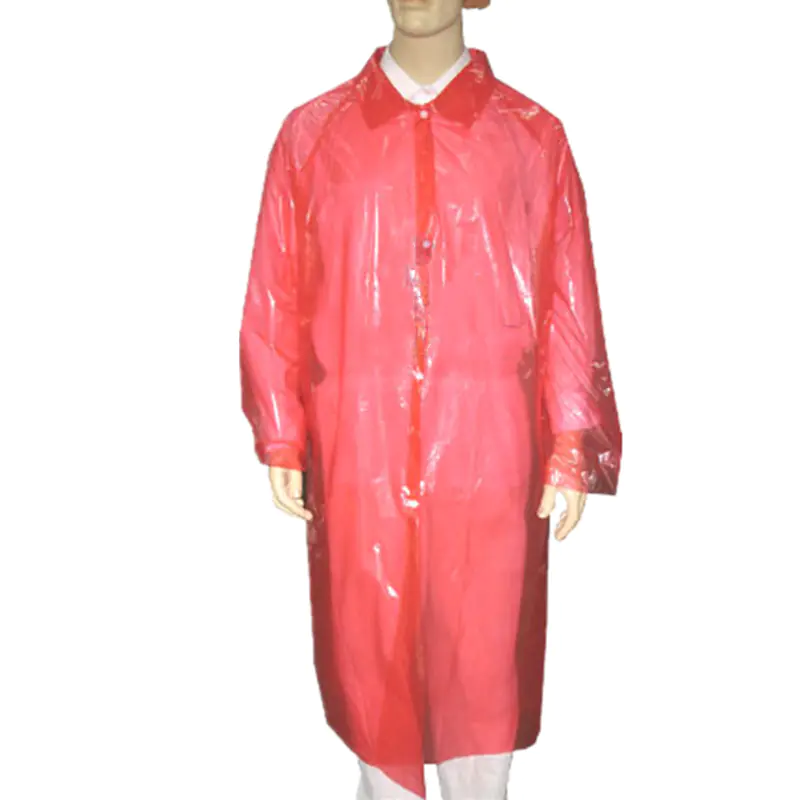
Rules and Standards for PE Gowns
To make sure gowns work well, there are rules and tests:
- ANSI/AAMI PB70: This standard tests how well gowns block liquids. Level 1 is for low risk, Level 2 for a bit more. PE gowns often meet Level 1 or 2.
- ISO Class certifications: These rules (ISO 14644) say how clean a cleanroom must be. Gowns used in cleanrooms must meet these cleanroom classifications.
- FDA, EU MDR: These groups have rules for medical and food-grade PPE. Gowns used in healthcare (medical-grade PE gowns) or food handling must follow these rules (FDA 21 CFR, EU MDR).
Picking the Right PE Gown for the Job
Not all PE gowns are the same. Here’s what to think about:
- Thickness (GSM): Gowns come in different thicknesses, measured in GSM (grams per square meter). A thicker gown (like 40 GSM) offers more protection than a thinner one (like 20 GSM). Choose based on the risk level.
- Design features: Gowns can have different features:
- Tie-back or snaps to close them.
- Elastic cuffs or open cuffs at the wrists.
- Thumb hooks (loops for your thumbs) to keep sleeves from riding up.
- Different levels of full coverage. Consider a Disposable PPE gown style based on need.
- Color coding: Sometimes colors mean different things. Blue might be for food (hygienic food processing attire), while white is common in healthcare (medical apparel).
What’s Next for PE Gowns?
People are always looking for ways to make things better:
- Sustainability: Regular PE plastic doesn’t break down easily. Companies are working on biodegradable PE alternatives to be kinder to the planet.
- Better Protection: Some new gowns might have antimicrobial coatings. These could kill germs right on the gown surface.
Common Questions About PE Gowns (FAQs)
- Can PE gowns be reused? No. They are designed for single-use only to ensure safety and prevent cross-contamination. Reusing them is risky.
- Are PE gowns safe for MRI machines? Yes. PE gowns usually have no metal parts, so they are safe to wear during an MRI.
- How do PE gowns compare to Tyvek gowns? PE gowns are usually cheaper and very good at blocking liquids. Tyvek gowns (a brand name) are often stronger and sometimes let air pass through better (more breathable), but they cost more.
Conclusion: PE Gowns are Safety Heroes
From hospitals to factories making computer chips, PE laboratory gowns play a big role. Their versatility makes them useful in so many places. These simple polyethylene protective clothing items help keep workers safe from spills and germs, and protect products from contamination.
Remember, choosing the right industry-specific designs and features is key. Whether you need fluid resistance, ESD protection, or basic contamination control gowns, there’s likely a PE gown solution available. They are a vital piece of PPE (personal protective equipment) in today’s world.










